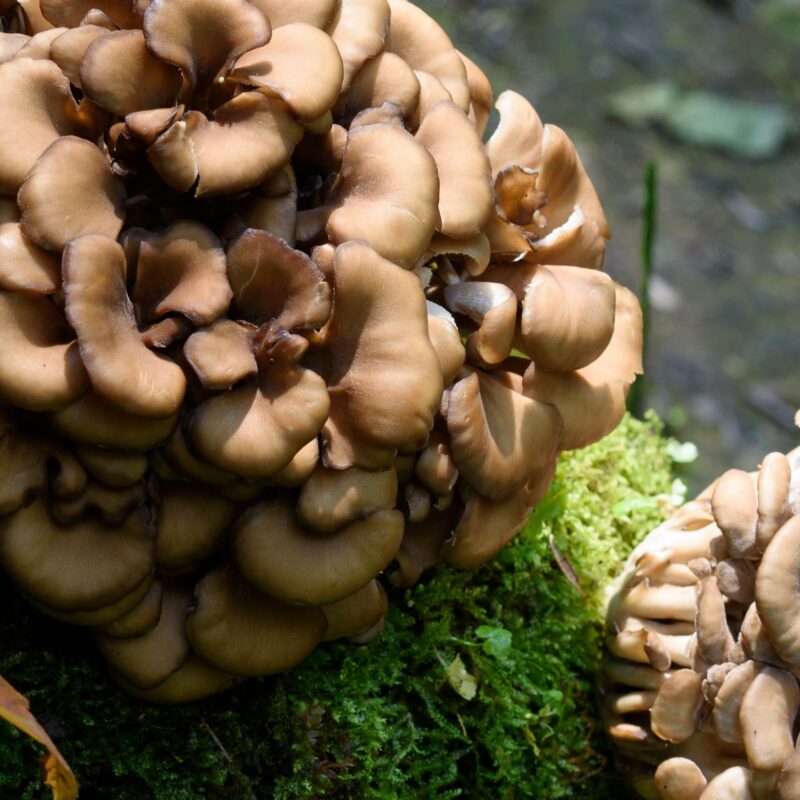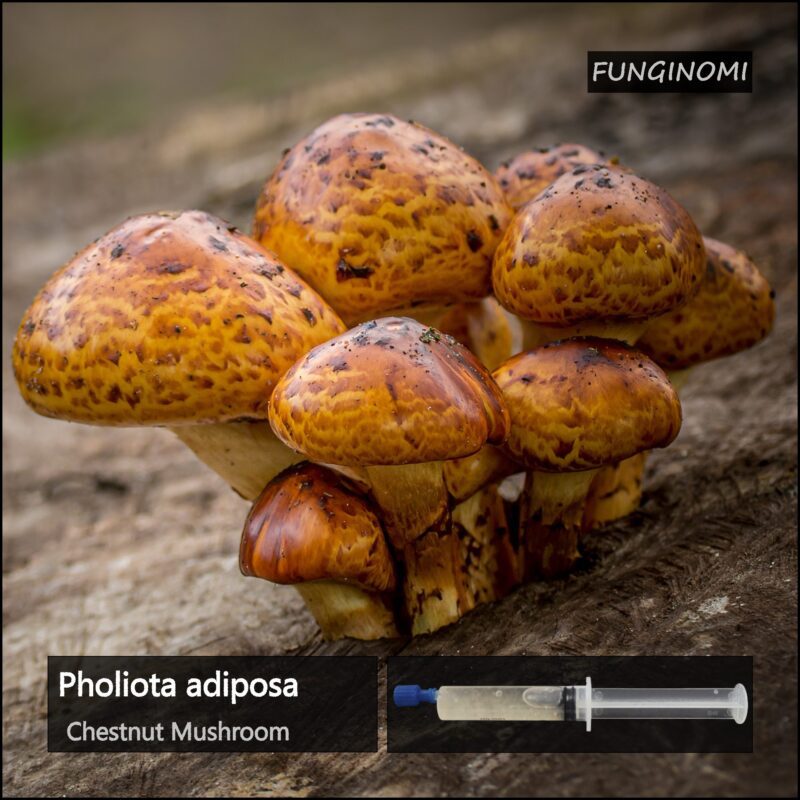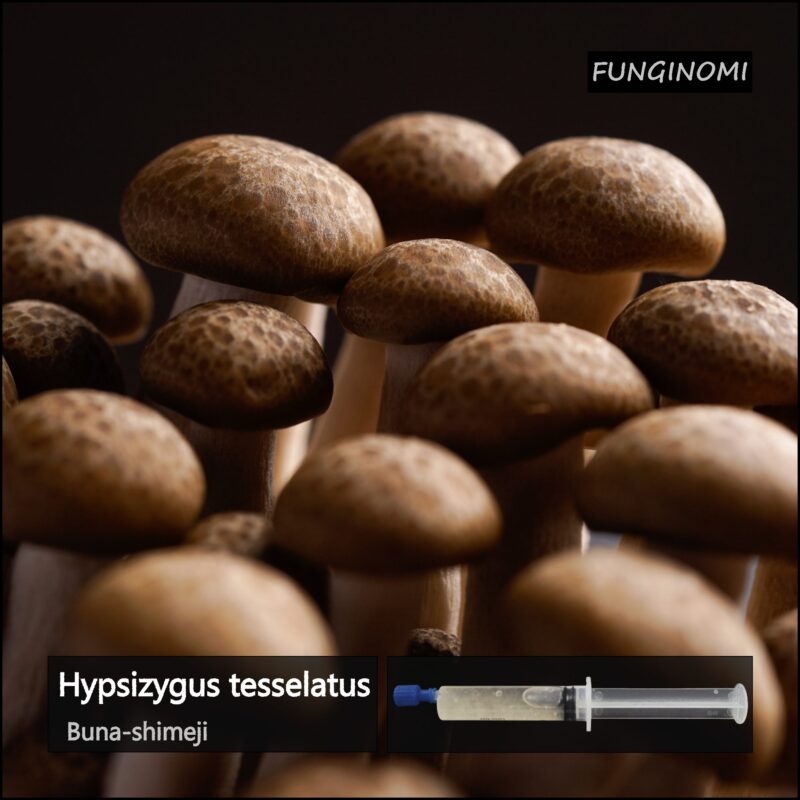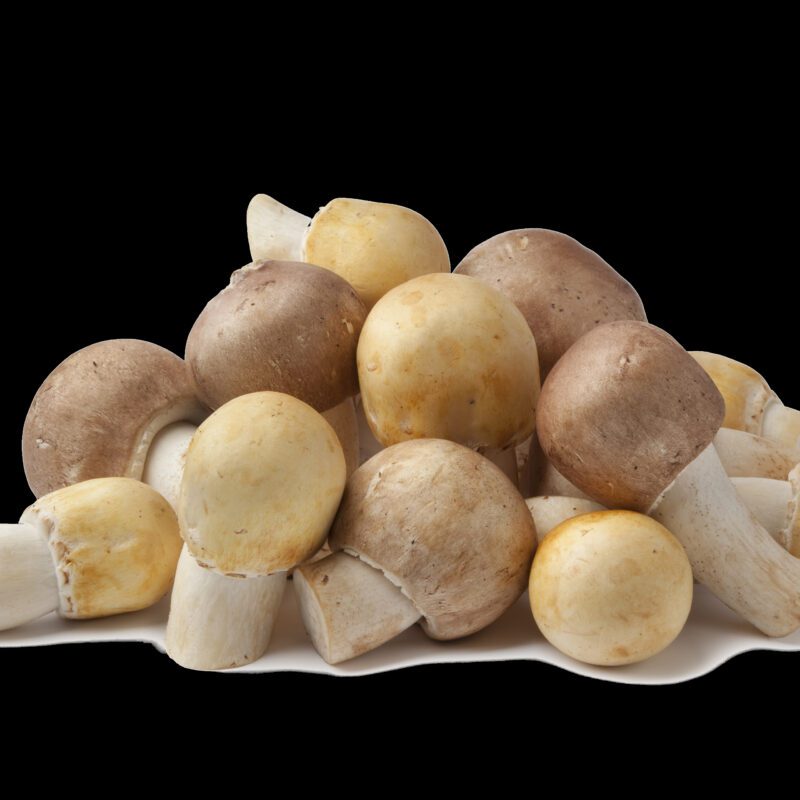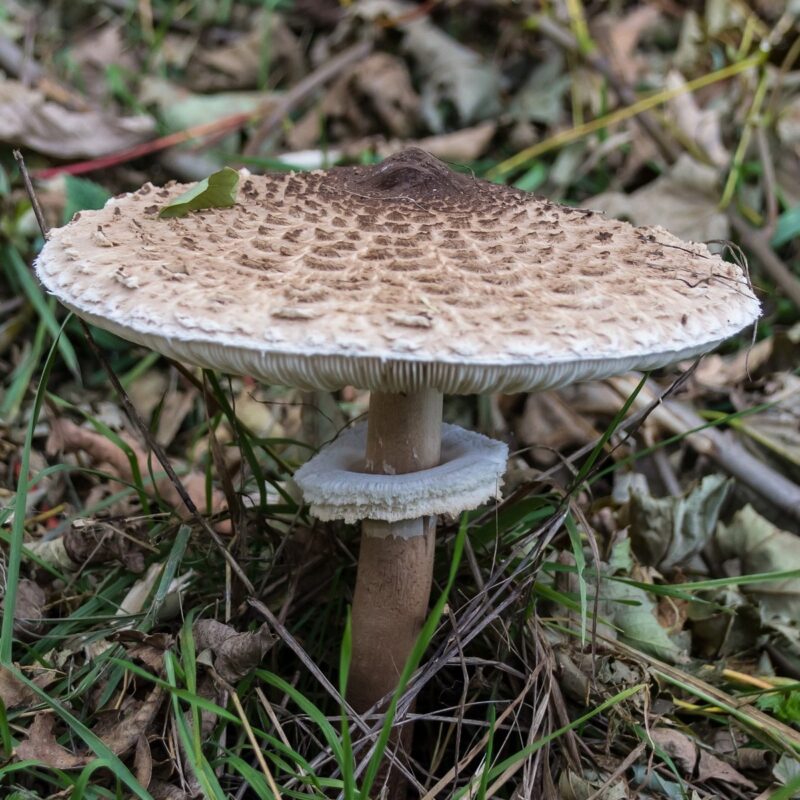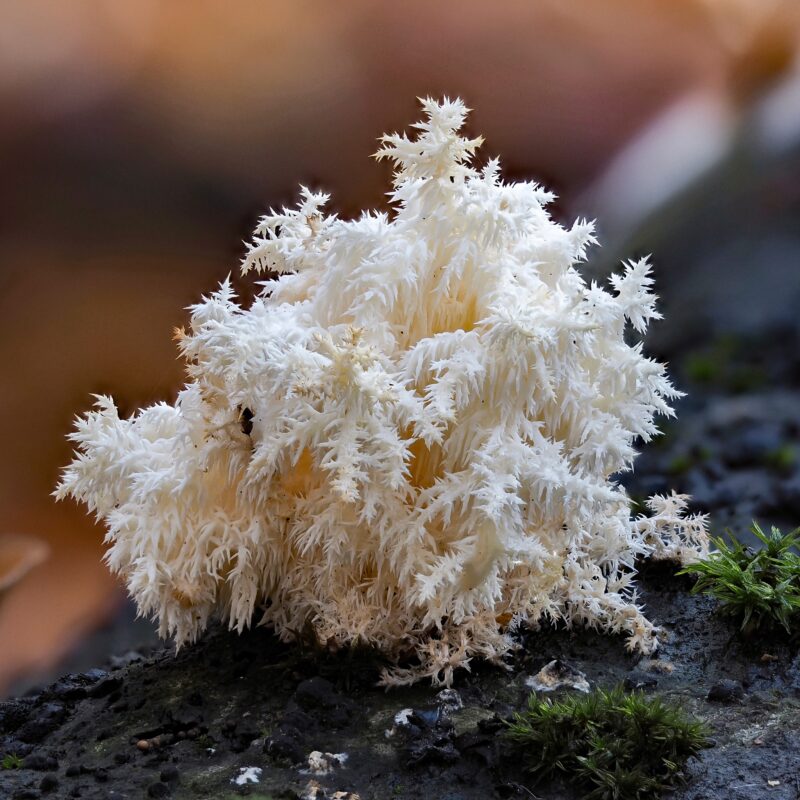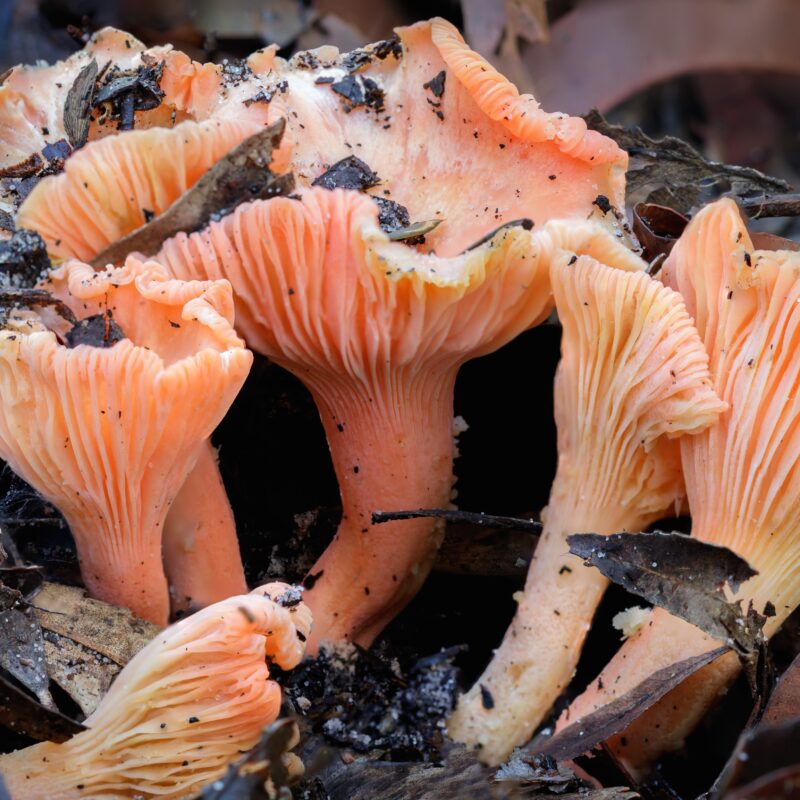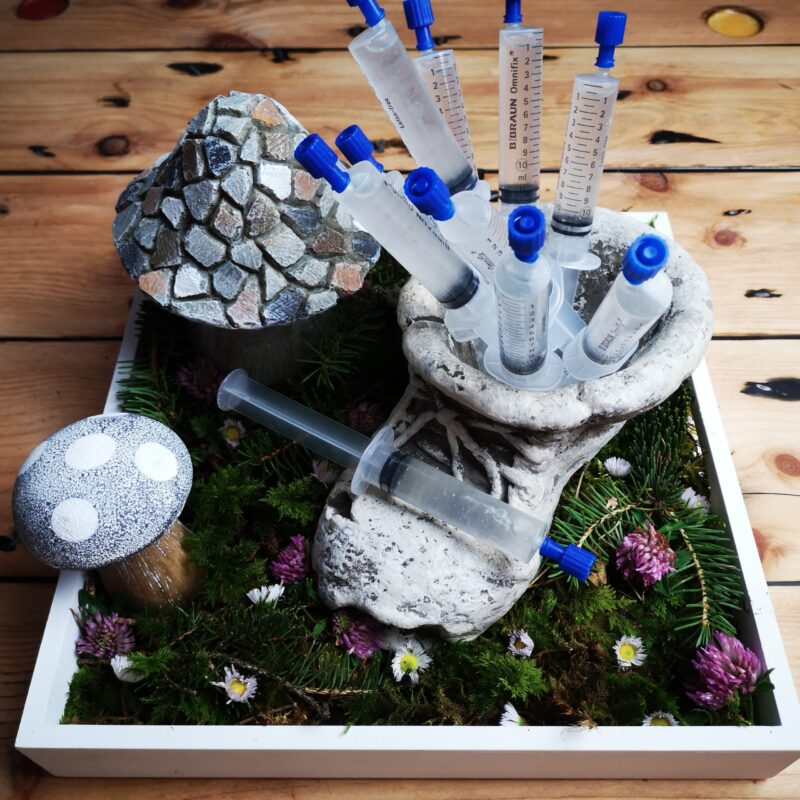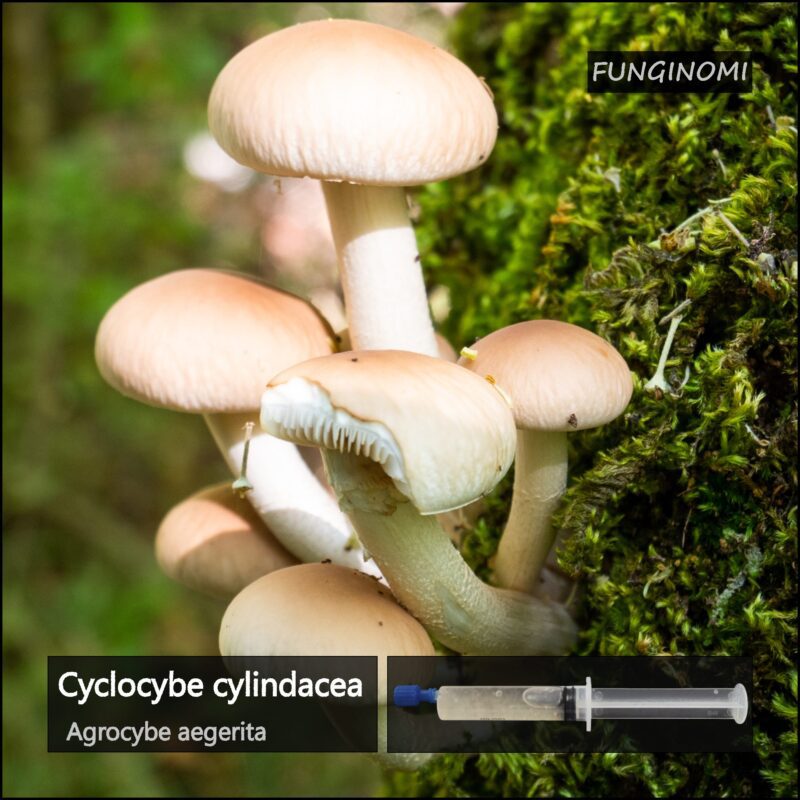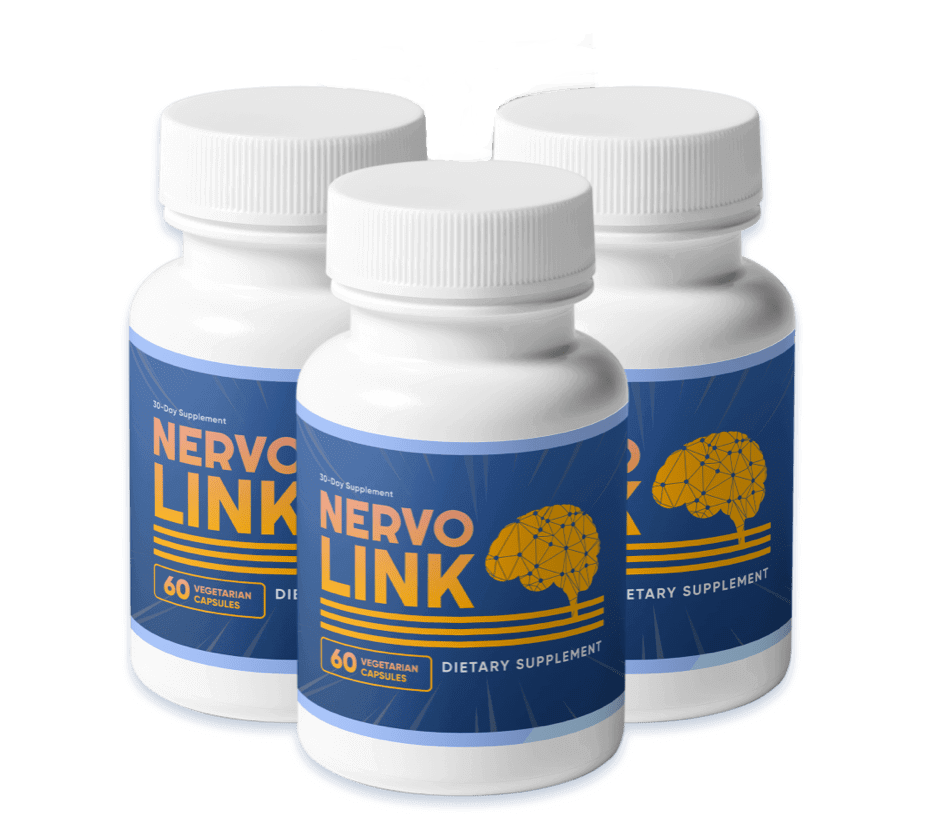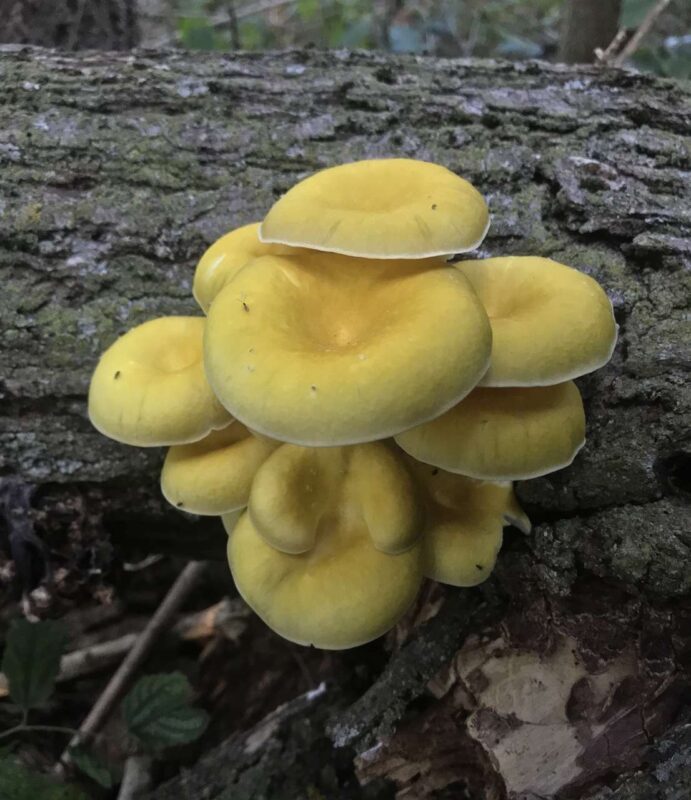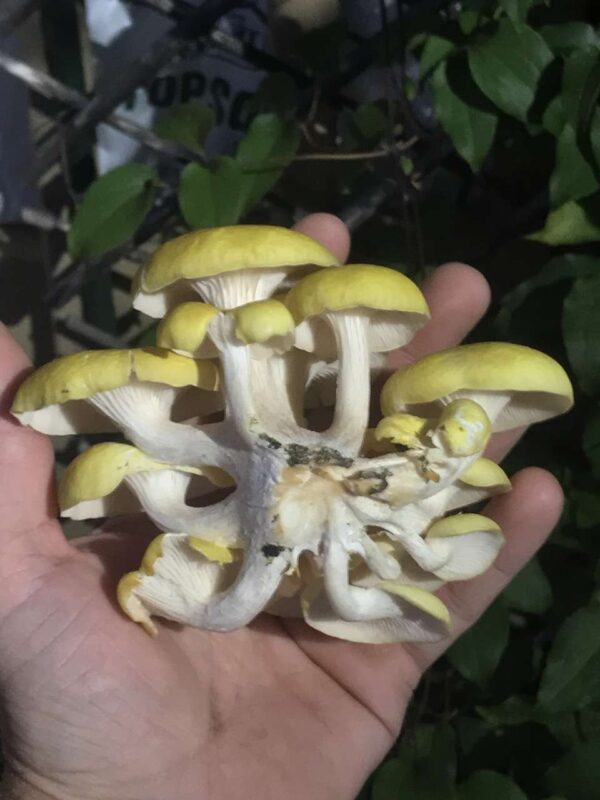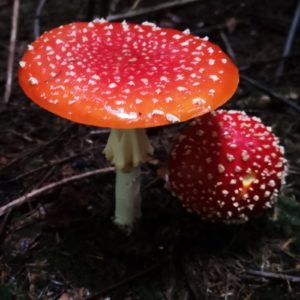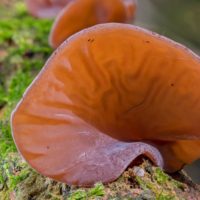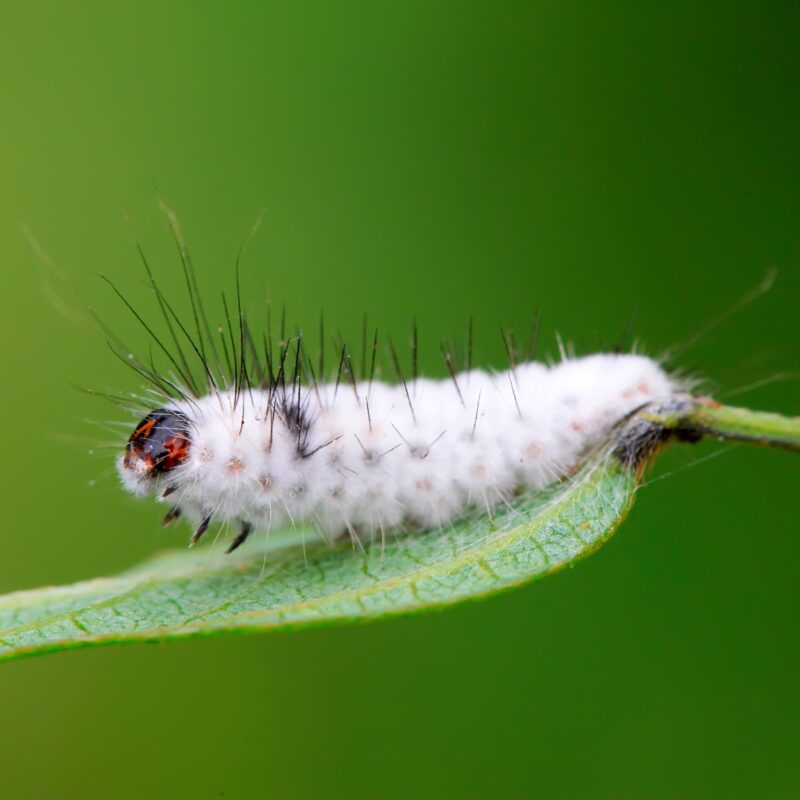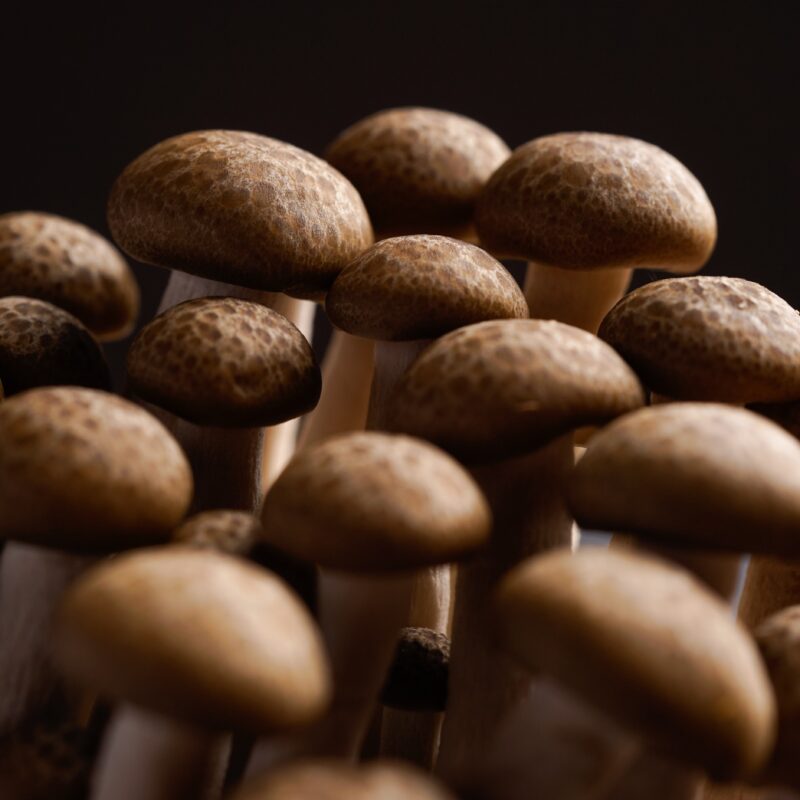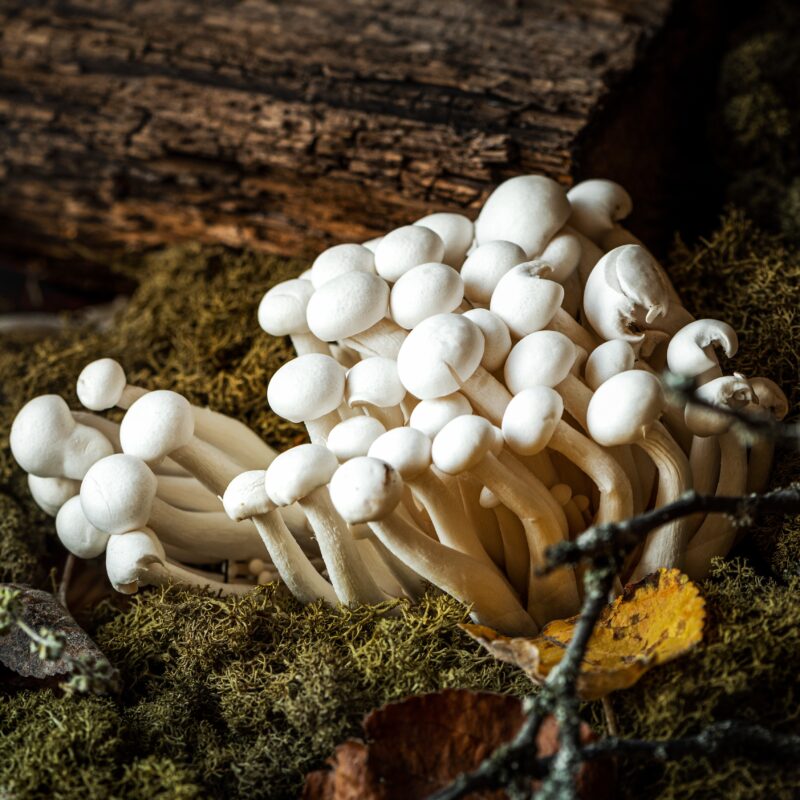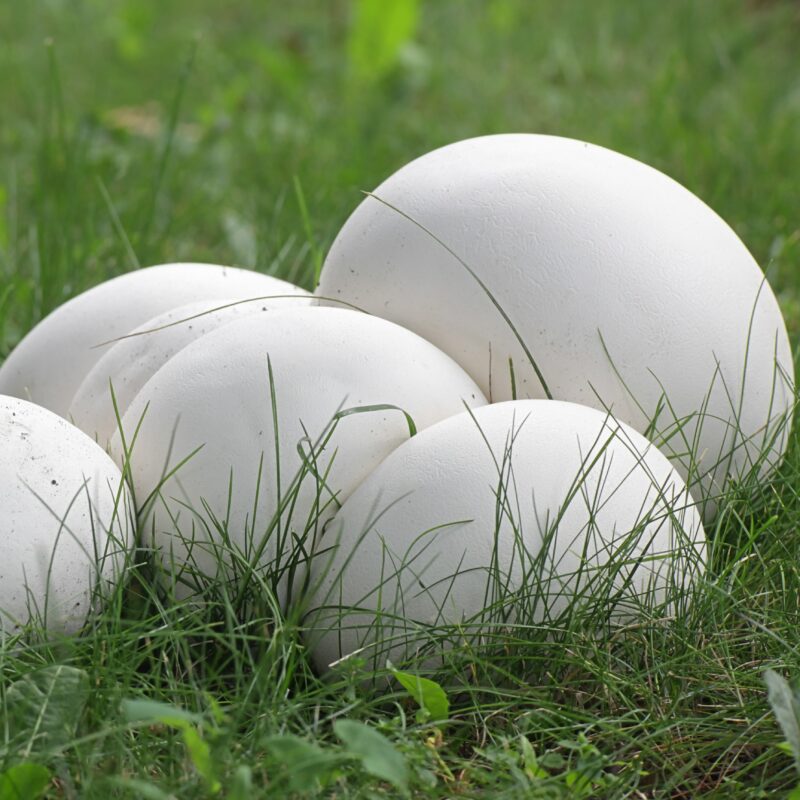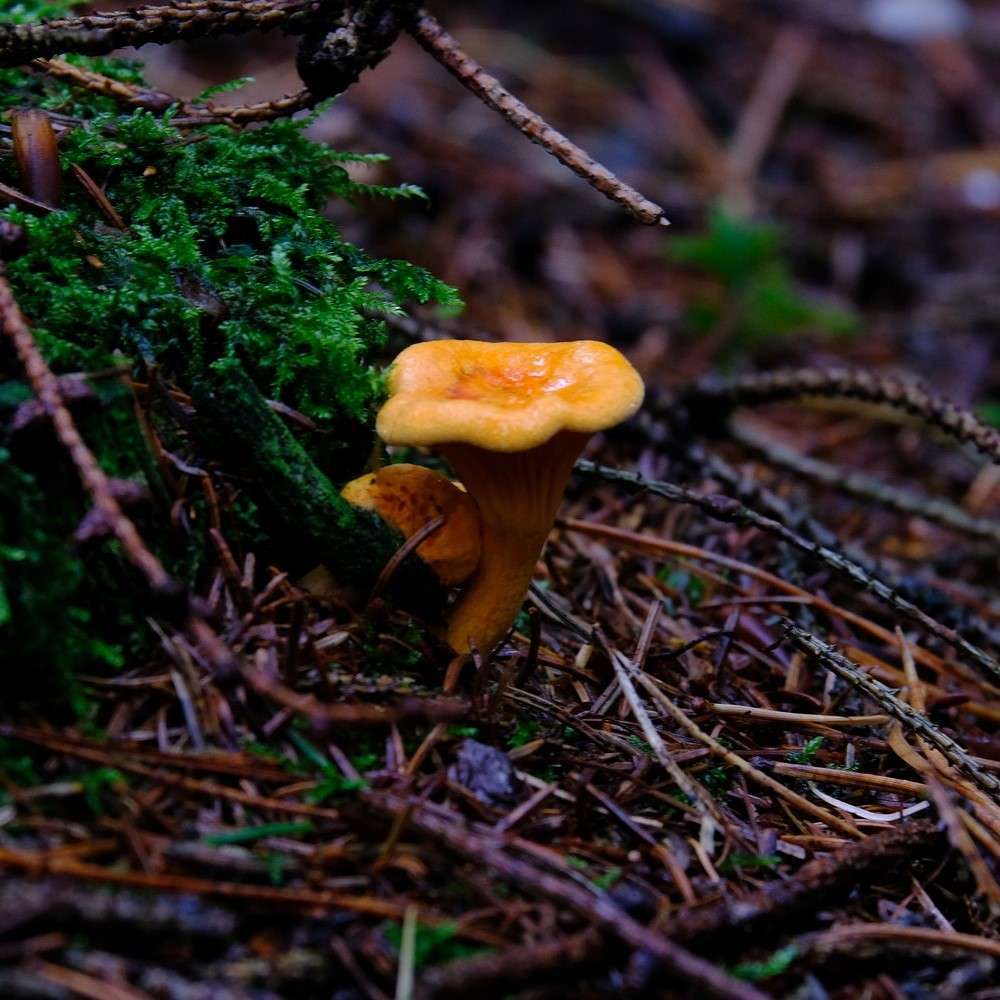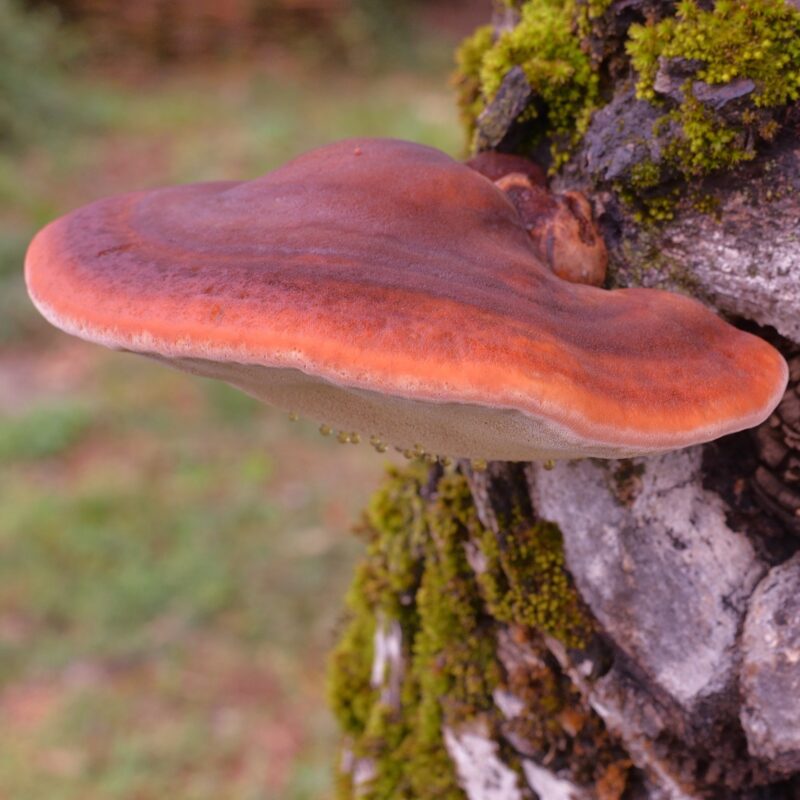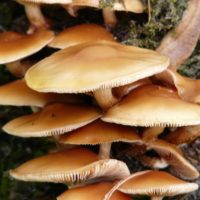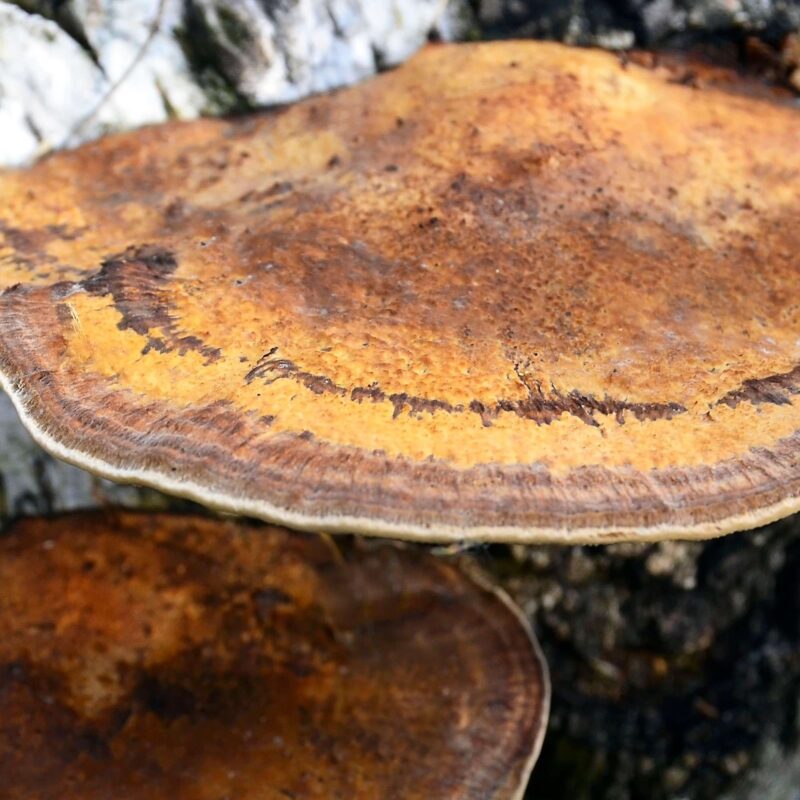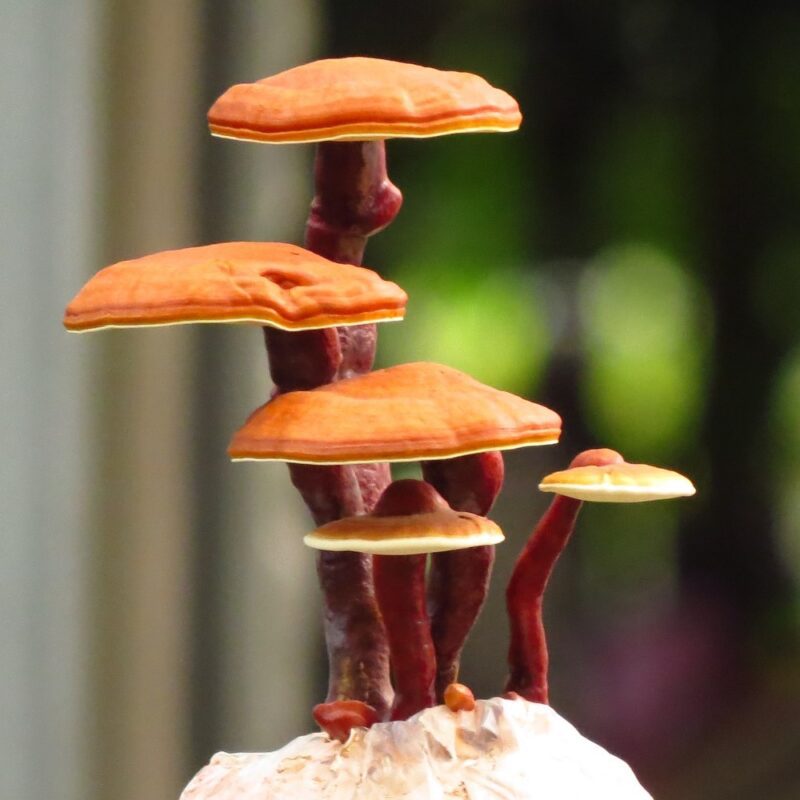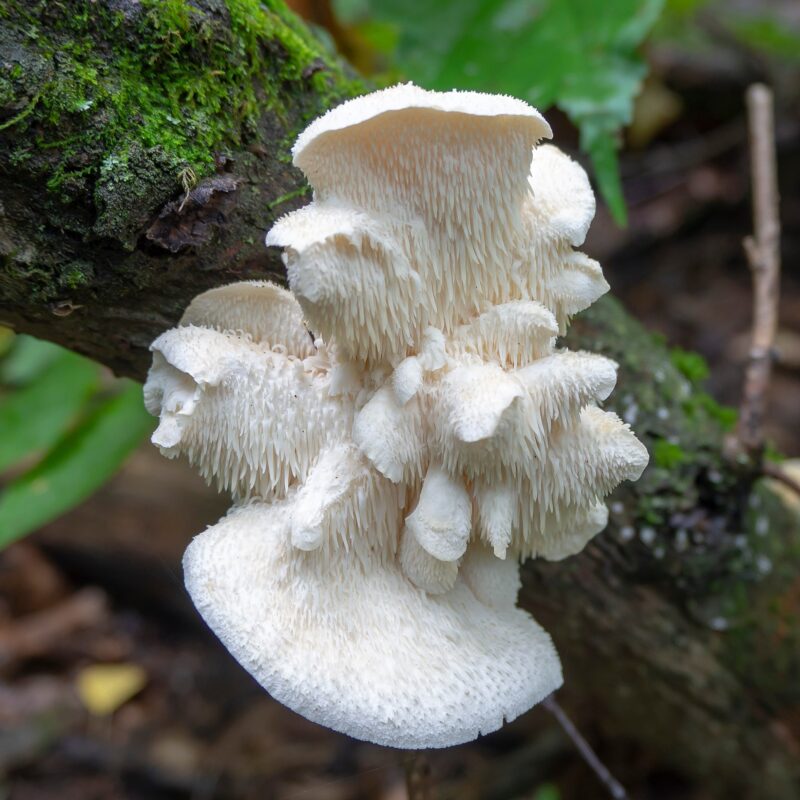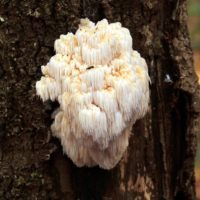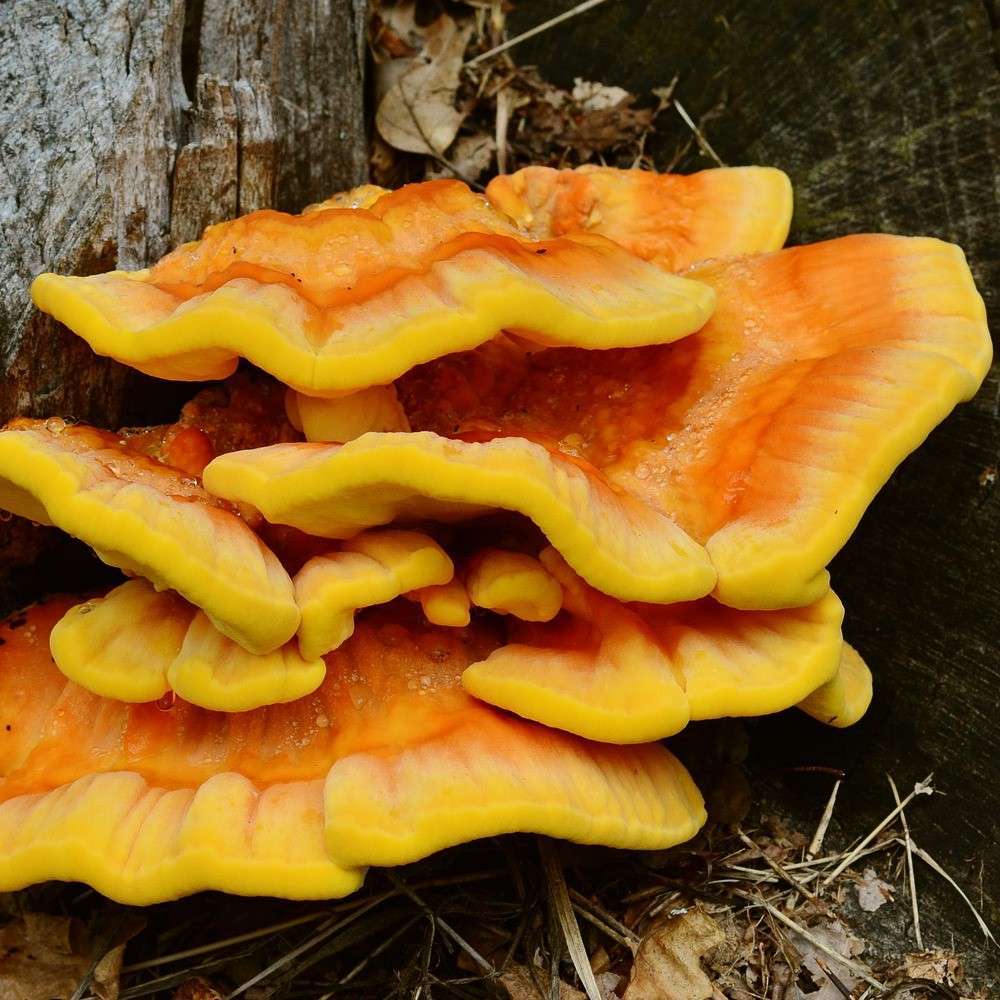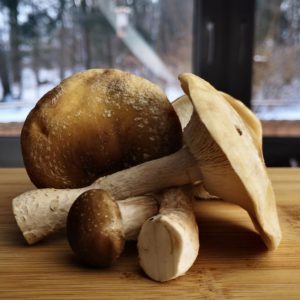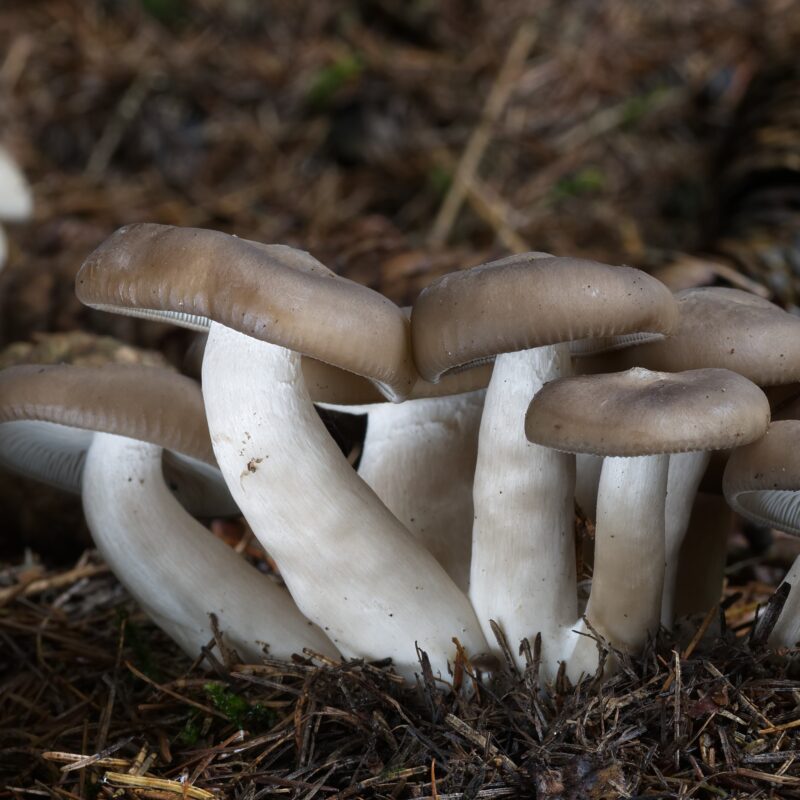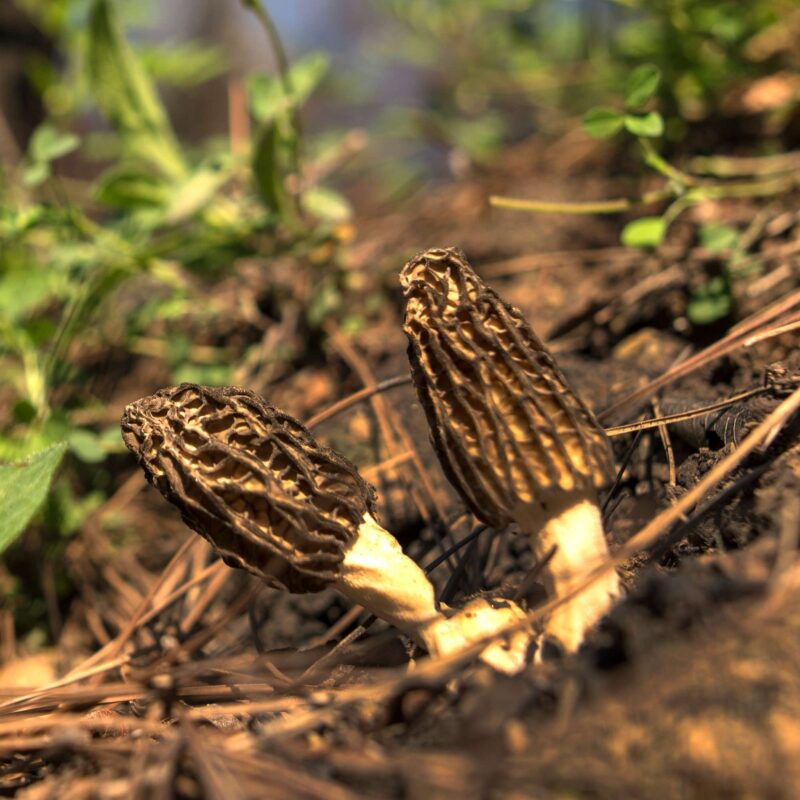Description
Properties
The Golden Oyster (Pleurotus citrinopileatus), also called lime oyster, is a species of mushroom from the family of Oyster relatives. The fruiting bodies have white stems and yellow caps and grow in clusters. The species is a popular edible mushroom, especially in Asia. Lemon yellow seitling is a wood decomposer that cometabolically breaks down lignin, causing white rot. The German names were introduced by growers only in recent times.
The groove-stalked seitling can change its way of life from parasitic to saprobiontic and is therefore easy to cultivate. This yellow variety, which actually only grows wild in the Far East and Africa, can be hybridized (colloquially: crossed) with European lines and has therefore lost its status as an independent species.
Grown in tropical areas as a substitute for oyster mushrooms because it tolerates heat well. Grows on a wide range of substrates.
Pleurotus citrinopileatus cannot quite match oyster mushrooms in taste and texture, but the speed, high yield, and bright yellow color make this fact fade into the background.
The mushroom is traditionally grown in East Asia and more recently in Taiwan, the USA and Europe. Besides its value as an edible mushroom, which is reflected in numerous dishes, Pleurotus citrinopileatus is also important as a supplier of medicinal substances, which is used in the treatment of emphysema. Suitable substrates are copper beech, ash, alder, poplar, willow and maple.
Pleurotus citrinopileatus is intended to be used to treat pulmonary emphysema. According to Ying (1987) in Icons of Medicinal Mushrooms, P. citrinopileatus can cure pulmonary emphysema. This mushroom is likely similar to P. ostreatus in its cholesterol-lowering properties.
Oyster Mushrooms naturally synthesize a chemical called lovastatin. Lovastatin is part of the statin family of drugs, meaning that it inhibits the production of cholesterol in the body and can potentially lower LDL cholesterol. Lovastatin can also be found naturally in Red Yeast Rice and is manufactured commercially from Aspergillus terreus.
Lovastatin works by inhibiting the activity of the enzyme HMG-CoA reductase, which acts as the rate limiting step to the synthesis of cholesterol in the body. This serves to help prevent hypercholesterolemia, or high cholesterol, which is a major risk factor in cardiovascular disease. Studies in rats support the cholesterol lowering effects of ingesting Pleurotus ostreatus, which naturally contains about 2.8% Lovastatin by weight.
HMG-CoA reductase serves as the rate limiting enzyme for cholesterol production
The conversion of HMG-CoA to mevalonate by HMG-CoA reductase is blocked by Lovastatin.
Yellow Oyster mushrooms are an excellent source of nutrients, and are a low calorie, low cholesterol, and low fat source of protein, dietary fiber, thiamin, vitamin B6, iron, magnesium, zinc, manganese, niacin, copper, potassium, and antioxidants. Check out these impressive nutrition facts.
1. Growing
Affiliate Partner
Growing Procedure
Pleurotus citrinopileatus thrives well at moderate room temperatures and really “shoots” at higher values. Also copes well on over-scalded straw pellets and other simple substrates. Best quality is achieved with sterile substrate on hardwood base and grain, highest yields are achieved on bean straw. Stem crops on hardwoods are also possible. Although obviously heat-loving, stem crops survive even freezing winter periods.
Like all swarm fruiting members of the Pleurotus family, the lime oyster benefits from a few lateral fruiting openings in the substrate container.
From these few spots, cauliflower-like precursors form first, still covered by a delicate skin. Often, remnants of this gossamer coating, which does not otherwise occur in other species of seitlings, are mistaken for mold. In the second picture, magnification reveals what is meant.
Avoid opening the Pleurotus citrinopileatus culture too extensively. The fungus tolerates periods of heat well if it is well ventilated and humidified.
They go about this by excreting digestive enzymes through the tips of root-like extensions called hyphae. The enzymes break down their food leaving a space filled with nutrients that the hyphae can continue growing into, absorbing, and digesting again as it feeds. The hyphae branch and grow into a thicker mass called a mycelium, which maximizes the surface area through which feeding can take place.
Growing
Agar Culture Media: MEA, MYPA, MYA, PDYA
Cropping:
Containers for fruiting: Columns, bags, trays and perforated plastic bottles
Biological efficience: After the second flush, relatively few mushrooms form. Biological Efficiency: 25-75% indoors with wheat straw. Yield efficiencies are higher on cotton seed modified substrates.
Substrates: Rye, wheat, sorghum, milo or millet. Every part of the coffee plant can be recycled by growing oyster mushrooms. Cottonseed hulls, chopped corn cobs, and hardwood sawdust. Alternative substrates that are being commercially developed are sugarcane bagasse, paper by-products, banana leaves, and peanut shells.
S
|
P
|
F
|
|
|---|---|---|---|
Temp °C |
24-29 | 21-27(32) | 21-29 |
Relative Humidity % |
90-100 | 95-100 | 90-95 |
Duration d |
10-14 | 3-5 | 3-5 |
CO2 ppm |
>5000 | <1000 | <1000 |
FAE per h |
1-2 | 4-8 | 4-8 |
Light lux |
– | 500-1000 | 500-1000 |
Growing Characteristics
Pleurotus citrinopileatus usually grow in large clusters arising from a single attached base. Bunches are often made up of fifty to a hundred or more mushrooms. As strains of this species age, the yellow cap color loses and turns beige, and fewer fungi are produced in each primordial group.
Natural Habitat
As a saprobiont, the Golden Oyster Mushroom attacks dead or injured wood of deciduous trees, where it breaks down the lignin component, causing white rot. Natural substrates are the wood of elms and beeches. It is found in riparian forests and along riverbanks and requires comparatively high temperatures (21-29 °C) to grow, so it does not form fruiting bodies below 16-18 °C, but is very tolerant in the upper temperature range. When fruiting, the relative humidity of the air should be above 80% for the Lemon Toadstool.
Pleurotus citrinopileatus is found in Russia, Africa, as well as in Asia.
A saprophyte of Asian hardwoods, especially oak, elm, beech, and poplar
2. Identification
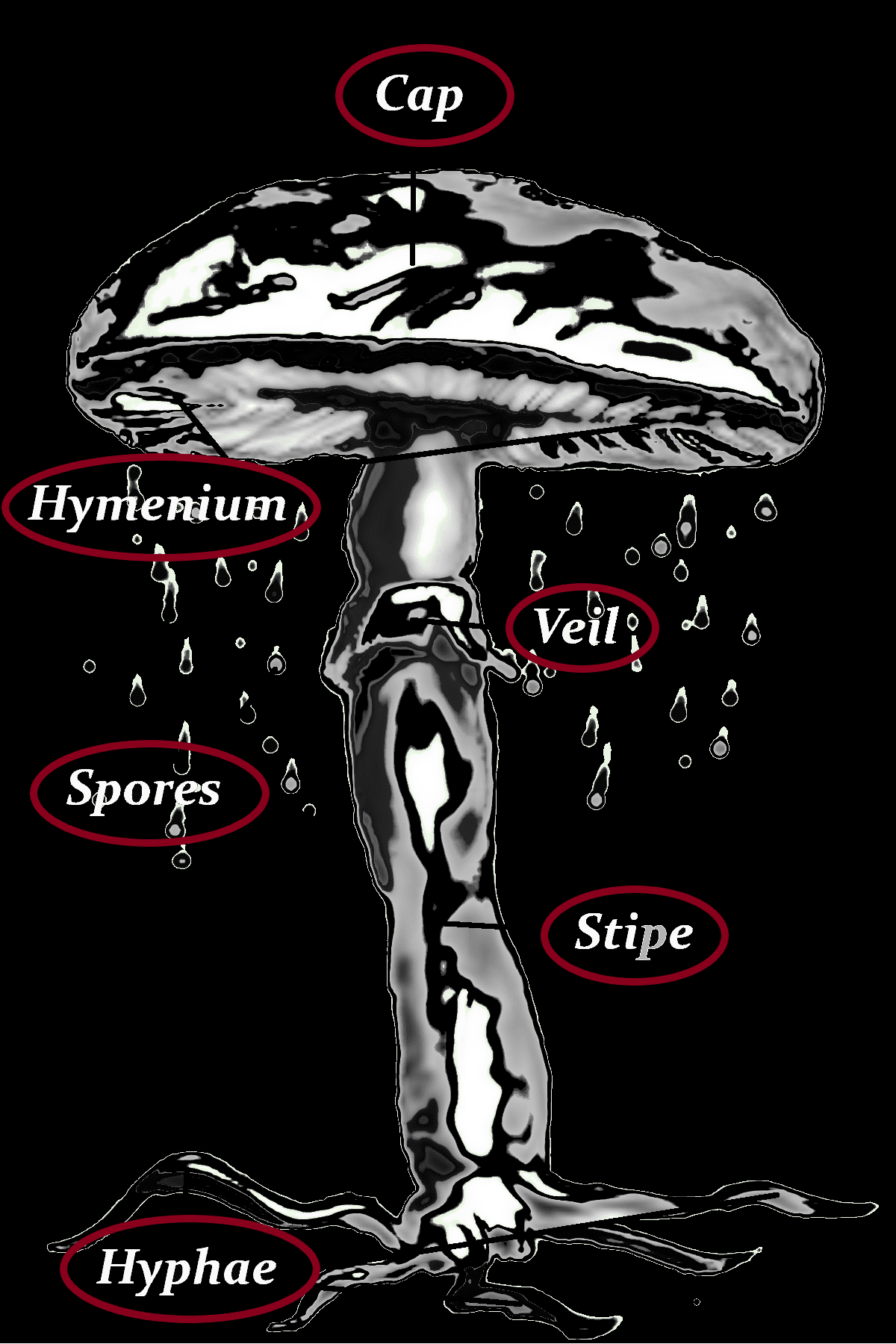
Cap
-golden to light yellow
-2-5 cm
-convex to flat when ripe
-often dented in the middle
-thin-fleshed
-with deciduous gills emerging through partially translucent cap flesh
Hymenium
-gills
-decurrent
Stipe
-bar
-white stems
-attached centrally to the caps
Veil
–
Hyphae
-whitish-yellowish mycelium
-often with densely growing clusters
-primordia initially yellow
-this fungus first forms a layer of very fine mycelium, other then Pleurotus ostreatus
Spores
-spores pale pink, buff
-7.5–9.0 × 3.0–3.5 µ
-clamp connections available
-Dimitic hyphal system.
Danger of confusion
Pleurotus cornucopiae, Pleurotus pulmonarius, Pleurocybella porrigens, Pleurotus ostreatus
3. Consuming
Gourmet
Pleurotus citrinopileatus remind a little of cashew nuts in taste. They are good to be fried very hot in a pan or wok, you’d better not boil the mushroom. Unfortunately, the color is lost during preparation. With fully ripe specimens they better cut away the stalk, unless they like a little “bite”.
Flesh
white, thin, fibrous, fleshy
Taste
mild, cashew
Smell
grain spawn smells astringent, pungent, nutty or fishy
Nutritional content per 100g
| Proximates: | |
| Water | 89.2g |
| Energy (Atwater General Factors) | 41kcal |
| Energy (Atwater Specific Factors) | 33kcal |
| Nitrogen | 0.46g |
| Protein | 2.9g |
| Total lipid (fat) | 0.19g |
| Ash | 0.73g |
| Carbohydrates: | |
| Carbohydrate, by difference | 6.94g |
| Minerals: | |
| Calcium, Ca | <2.5mg |
| Iron, Fe | 0.7mg |
| Magnesium, Mg | 13.9mg |
| Phosphorus, P | 86mg |
| Potassium, K | 282mg |
| Sodium, Na | 1mg |
| Zinc, Zn | 0.68mg |
| Copper, Cu | 106mg |
| Manganese, Mn | 86mg |
| Selenium, Se | 1.4µg |
| Vitamins and Other Components: | |
| Thiamin | 0.07mg |
| Riboflavin | 244mg |
| Niacin | 5.75mg |
| Vitamin B-6 | 99mg |
| Biotin | 7µg |
| Folate, total | 63µg |
| Vitamin D (D2 + D3), International Units | 1.6IU |
| Vitamin D (D2 + D3) | 0.04µg |
| Vitamin D2 (ergocalciferol) | 0.04µg |
| Vitamin D4 | 0µg |
| Phytosterols: | |
| Stigmasterol | <0.2mg |
| Campesterol | <0.2mg |
| Beta-sitosterol | <0.2mg |
| Ergosta-7-enol | 1.31mg |
| Ergosta-7,22-dienol | 0.88mg |
| Ergosta-5,7-dienol | 8.43mg |
| Ergosterol | 58mg |
| Beta-sitostanol | <0.2mg |
| Delta-5-avenasterol | <0.2mg |
| Delta-7-Stigmastenol | <0.2mg |
| Amino acids: | |
| Ergothioneine | 14mg |
© U.S. Department Of Agriculture
4. Data med, edible
other names
| Chinesisch (vereinfacht) | 榆黄蘑 |
| Chinesisch (vereinfacht) | 金顶侧耳 |
| Englisch | Golden Oyster Mushroom |
| Estnisch | kuldservik |
| Japanisch | タモギタケ |
| Russisch | Вёшенка лимонная |
| Schwedisch | citronmussling |
| Tschechisch | hlíva žlutá |
| Türkisch | sitrino kayın mantarı |
| Wissenschaftl. Name | Pleurotus citrinopileatus |
| Wissenschaftl. Name | Pleurotus cornucopiae citrinopileatus |
other names
The Golden Oyster Mushroom, Tamogitake (Japanese), Il’Mak (Russian Term For “Elm Mushroom”), Zitronenseitling, Zitronengelber Seitling, Limonen-Seitling, Yellow Oyster Mushroom, Golden Oyster Mushroom, Zitronen-Seitling, Limonen-Seitling, Lemonoyster, Elm Mushroom
| Kingdom | Fungi |
|---|
| Division | Basidiomycota |
| Class | Agaricomycetes |
| Order | Agaricales |
| Family | Pleurotaceae |
| Genus | Pleurotaceae |
| Species | P. citrinopileatus |
| Ecology | Saprotrophic |



